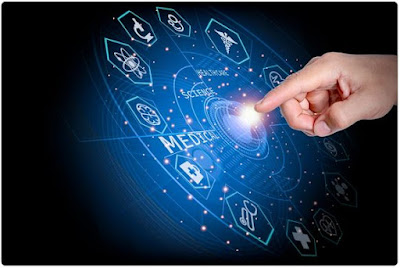Transforming Healthcare with Remote Patient Monitoring: Exploring the Advantages and Challenges
The healthcare industry has been transformed by technology, and one
of the most significant developments in recent years has been remote
patient monitoring (RPM). RPM refers to the use of digital technologies
to collect and transmit medical data from patients in real-time,
allowing healthcare providers to monitor patients’ health and provide
care remotely.
RPM has become increasingly popular in recent
years, particularly in light of the COVID-19 pandemic, which has led to a
surge in demand for remote healthcare services. According to a recent
report the global remote patient monitoring market is expected to reach $175.2 billion by 2027, growing at a compound annual growth rate of 26.7% from 2022 to 2027.
One
of the key advantages of RPM is that it allows healthcare providers to
monitor patients’ health in real-time, enabling early detection of
health issues and prompt intervention. This can help to prevent hospital
readmissions, reduce healthcare costs, and improve patient outcomes.
There
are several types of RPM technologies available, including wearable
devices, mobile health apps, and telehealth platforms. Wearable devices
such as fitness trackers, smartwatches, and biosensors can monitor vital
signs such as heart rate, blood pressure, and oxygen saturation, as
well as track activity levels, sleep patterns, and other health metrics.
Mobile health apps can be used to collect and transmit data from
wearable devices, as well as allow patients to input data such as
symptoms, medication use, and dietary information. Telehealth platforms
enable patients to connect with healthcare providers remotely, either
through video conferencing or messaging.
Despite the benefits of
RPM, there are also some challenges to widespread adoption. One of the
main challenges is data security and privacy, as remote monitoring
involves the collection and transmission of sensitive medical data.
Healthcare providers and technology vendors need to ensure that patient
data is protected at all times, and comply with regulations such as
HIPAA and GDPR.
Another challenge is the need for healthcare
providers to integrate RPM into their workflows and processes. This
requires investment in training, infrastructure, and software, as well
as changes to clinical workflows and practices. Additionally, there may
be resistance from some healthcare providers who are accustomed to
traditional in-person care models.
In conclusion, RPM is a
rapidly growing industry with enormous potential to transform
healthcare. It offers numerous benefits for patients and healthcare
providers alike, including improved patient outcomes, reduced healthcare
costs, and increased access to care. However, there are also challenges
to widespread adoption, particularly around data security and privacy
and integration into existing workflows. As technology and healthcare
continue to evolve, it is likely that RPM will play an increasingly
important role in the delivery of healthcare services.
Related News
https://www.marketwatch.com/press-release/remote-patient-monitoring-rpm-market-worth-1752-billion-by-2027-exclusive-report-by-marketsandmarketstm-2023-02-24
https://michigan.newsnetmedia.com/story/48447479/remote-patient-monitoring-rpm-market-worth-1752-billion-by-2027-exclusive-report-by-marketsandmarkets


Comments
Post a Comment